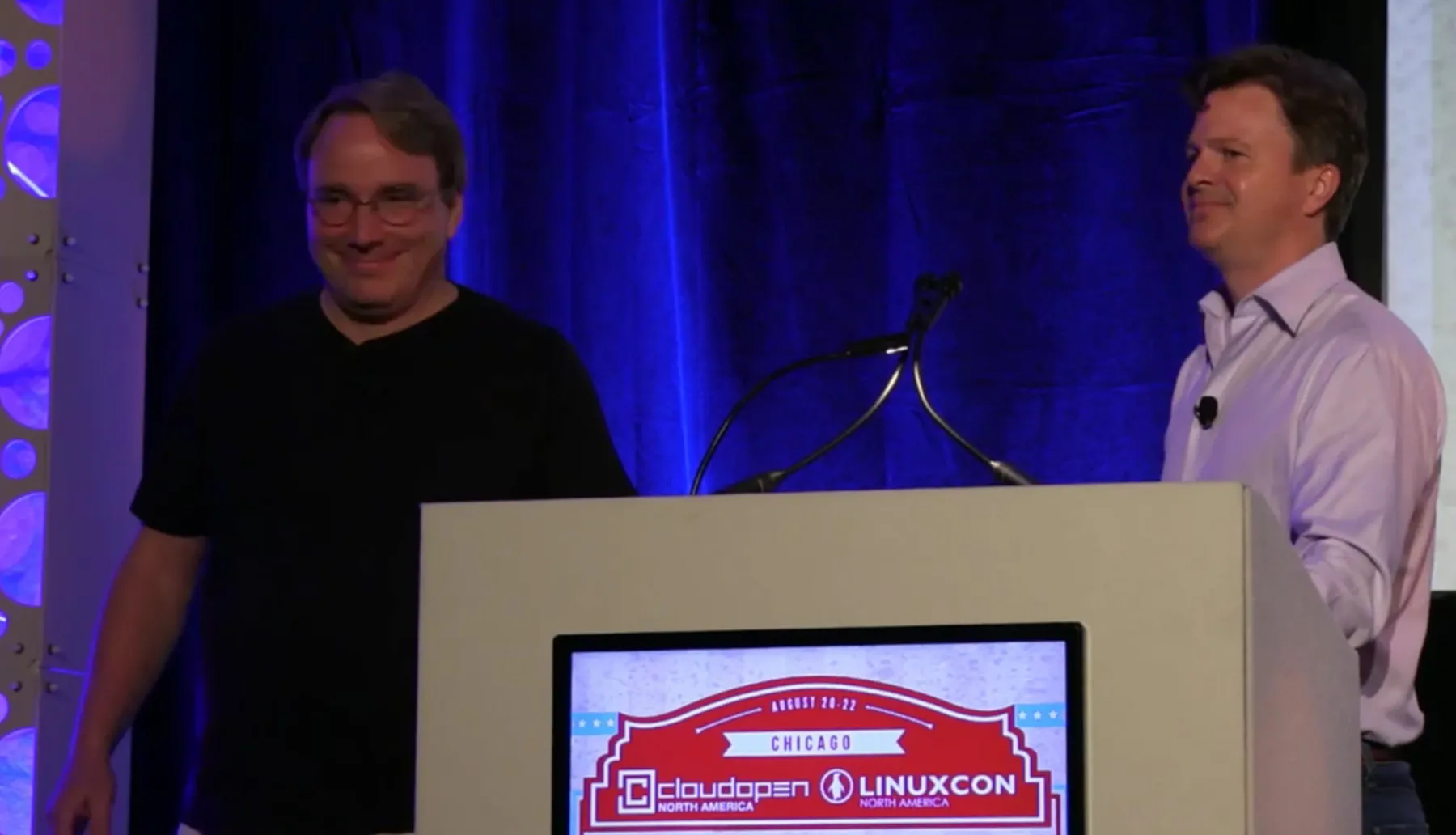- 12 Posts
- 80 Comments

 7·15 days ago
7·15 days agoThis banning culture of hate is ridiculous, you can disagree with someone, or even just ideas, but procuring “canceling” and “banning” to everything we don’t agree is crazy. This mono culture of hate really saddens me. But perhaps you’re right on your appreciation.
Some of these periodical rebirths of the debate about RMS, what are really looking for is discredit on the Free software, which is not the same as open source software. Drew is one of those, if I’m not mistaken because his blog is prolific, who believe free software has no hope, and the total triumph of open source, which in practice is correct, but ethically I’m not so sure. We should be aware of what’s behind all these attacks, and I believe it’s naive to think these attacks are just about RMS. Free software is ethical in the sense of the freedoms it seeks for the users, but that has no place on enterprises and corporations, open source has enjoyed a different fate because it’s not as strict on respecting those freedoms, which under enterprises and corporations are believed to be too restrictive and against their interests. And here we are over and over attacking the organizations (yes, the FSF is attacked not only because RMS is part of it, it was founded by him as well) and people defending those principles, because in the end our minds tend to disqualify everything way too easily, made easy with this banning culture of hate. I’ve read about how useless it is the FSF, and also about how useless it is the copyleft, and these recurrent intend to discredit the one who started all that of course discredits what came from him, one way or another. I wish I’m wrong on this, and that there was no pun intended towards free software…
The original post was most probably included into the wrong community for sure BTW, this is an open source community, so looking to empathize about free software stuff in here is not going to happen, even less for RMS.
Is it because Fedora doesn’t enable zswap by default?
https://wiki.archlinux.org/title/Improving_performance#zram_or_zswap
https://wiki.archlinux.org/title/Zswap
https://wiki.archlinux.org/title/Zram
One down side of zram is that you won’t be able to hibernate to swap, if that’s a requirement. On consoles this might be totally irrelevant though.

 7·25 days ago
7·25 days agoAnyone using NewsFlash? I really like it, specially to keep the seeds locally.
Just a minor suggestion. When looking for something different than what you’re currently familiar with, do so in very open minded way, hopefully no looking for clones to what you were used to, but willing to experience and learn new stuff (there’s no failure, just something new that had to be learned and experienced).
I know it’s easier saying than doing…
Looking for advice on giant communities is sort of hard, and in the end you won’t know what works better for you if you don’t try it. The open mind needs to come with some time to be able to play, and enjoy during the play, so it’s not a whole series of frustrations.
On this same forum (different threads/posts/converstions) I’ve read very different recommendations. Even though Manjaro has been recently getting a lot of bad reputation because of letting some certs expire, it’s still considered an “introductory” gnu + linux distribution. I’ve also read Mint is a pretty good “introductory” gnu + linux distribution as well, specially now that ubuntu has finally shown its inclination towards its snap store, rather than the good and solid dpkg + apt, which allowed it to grow on users to where it’s currently at.
I myself prefer rolling release models for distributions, and being as vanilla as possible, to be closer to upstream as possible. However I dislike systemd, which is just a personal taste, so I don’t have a specific recommendation. It used to be Manjaro offered openrc, but they dropped it, and the distributions I know are Artix (it has gui installers if that’s considered “introduction” level distribution, but one still need to handle the configuration mismatches with upgrades as with Arch), Gentoo (I wouldn’t say it’s not for starters, but for sure it has its learning curve, but more importantly you need to be aware that it’s a source based distribution), and Void. If you don’t really care, rolling release distributions, which might have an easy ramp up might be Manjaro as mentioned, and now I believe openSUSE Tumbleweed. maybe even fedora come close… Rolling release models might come even easier for newcomers, in my opinion, since there’s no need to think on what happens on major updates, but rather one needs to keep updating periodically, but hopefully the distribution helps supporting the safest and saner configurations natively so the user, and particularly newcomer to the distribution don’t have to deal a lot to get such safe and sane configurations, at least to start with. And that’s to me the important part to call it “introductory” distribution, easy installation might be part of it, but it’s hardly the majority of it, and this is perhaps the sad part of what I like about being as vanilla as possible, some distributions even take that as a mantra for configurations, and upstream developers don’t always have the safer, or the saner configurations by default. I believe Manjaro and some others take that into account to make things smoother to start with. Maintaining the distribution, keeping it up to date, being able to install stuff, has it’s learning curve, no matter the tools/frameworks to do so, and it might be harder if one has to deal with how to make things work because the software doesn’t work as it should (configuration required upfront), and it’s not hardened enough as well so the user needs to know that and do additional configuration upfront as well.
Sorry about that. I was not aware of other meanings. I’ll try to remember to use the complete “software” word instead of its acronym I was used to since the 90s… Hopefully under the context what I wrote doesn’t get misinterpreted. Thanks !
If talking about non proprietary kernels’ drivers, such as linux, then again, profit is what regulates it. No wonder why now nvidia finally cares about linux, being the most used kernels behind the cloud, behind servers of whatever. Meaning, it’s not profitable not to support linux now a days for Nvidia.
The other fundamental factor is lock-in, which is abused by some big corps, such as MS.
But the profit idea es even wrong, but it’s what we have been educated with. For an OEM, providing FOSS drivers or FOSS FW doesn’t mean to have less profit, but somehow it’s interpreted as such. And there’s also our culture, backed by corps again, that tends to make us believe that everything profitable enough has to be corporate secret, and if not, others would take advantage of you business. That way of thinking really prevents for more FOSS adoption at the OEMs level. I don’t agree with it. It might be the presence or lack of some HW features might be inferred by the drivers/FW, but it doesn’t mean your competitors will know how exactly you provide such feature, and even less how to make it with the performance you do. And usually once released, you really want to show off your features, your innovation and so on, not keep it secret. So in general, really see no issue for OEMs not to offer drivers and FW as FOSS, even as free/libre SW.
I can imagine OEMs offering FOSS drivers and FW, but that not being as convenient for the major players in the market, since that would risk their position in the market. Just a thought…
Remember the lock-in mechanisms by the corps that feel being threatened if open sourcing dirvers… Some of which no longer say it out loud, but still think GPLed licences are a cancer…
I have never bought the idea that free/libre SW in general is just not as easy, including GNU+Linux. I’ll leave out open source initially, and come back to it later, not because it doesn’t experience the same, but because corporate wide it doesn’t suffer the same fate. And linux itself is one of the most widely used kernel if not the most, it happens similarly to openssl, and so many other open source components. So I see no issue with linux adoption, I can’t think of any kernel more adopted than linux…
To me what has really affected free/libre SW is the monopolistic abuse of the corporations, plus their ambitions, and how in Today’s world, they have created the illusion that being a technologist is the same as being a technology consumer, which gets into the hearts of governments and education systems (more hurting, public education systems). Let me try some practical examples:
- Educations systems translate the need to educate students about technology into making them familiar with MS different SW, like the windows OS, MS outlook, MS office, MS project, MS visio. Even on the higher levels of education, colleges and universities prefer to use matlab over octave for example, even for just matrix operations scripting. Office covers spread sheets BTW, so people specialized on accounting know excel, but no other spread sheet.
- On public education systems, where one would be inclined to think it might get more interest on developing the expertise to not depend on proprietary SW only, it’s where corporate reach deeper offering “cheap” educational licences.
- From the prior two keep in mind that educational licenses from proprietary SW usually means future professional and people depending on proprietary SW in general. They are meant not to educate, but rather generate the future dependent population.
- Governments, whether local or nation wide, instead of adhering to open standards, for any kind of form submission, and even further to adhere to use of free and open source SW, to build the technical and competency expertise required to have a criteria about different technologies, about SW, infrastructure, DBs, and so, they prefer to require citizens to use non free or open source SW to create required forms, and prefer to pay for SW solutions which totally lock in the entire solution, usually coming from big corps, or other companies actually making use of SW and technologies coming from big corps.
- In their effort to discredit free/libre SW, the idea that the fundamental principles behind free/libre SW hurt the SW industry, or that are irrelevant to Today’s world or even worse than that, there were claims that the GPLed kernel was a great threat and GPLed SW a cancer. Now that open source usage has totally overcome free/libre SW, there are no such claims, but the damage is done. There’s nothing wrong with people wanting some compensation from corps, when developing SW, and thus not using free/libre licenses like GPL-3+ or AGPL, but in the end that eventually might hurt the users rights protected by such licenses, which such corps don’t really care that much (their profit has higher priority for sure), and experience shows that just because SW is licensed open source doesn’t guarantee any compensation for the development whatsoever, so if volunteering SW, doing so as open source is not even close to get every developer a decent income out of their contributions. Well, except for the big corps backed SW, linux included, but that’s not the majority of open source SW.
- The discredit of free/libre SW, which allowed the eventual creation of open source, is such that the banning of individuals ends up being an attack to the organizations behind it and even their principles and motivation.
- Moving away from the free/libre SW observations, even now with open source, from the big corps, which barely compensate the open source developers, complain about the open source supply chain, campaigning against not well maintained SW and such, there’s the famous image of a complex and heavy structure depending on a weak and deficient leg. Whatever truth around that figure, it of course hides the overall picture of the developer of such leg not ever being compensated (not to mention paid) for his library or SW component, and perhaps that’s one of the reasons the project got even abandoned, but now it’s easy to blame such situation when talking about FOSS in general.
Paid SW might be more intuitive to use at times, I can understand that. There are paid developers making the UIs more intuitive and attractive, in the end it needs to be bought or massively consumed to get earning through its use. But if you look deeper, perhaps it’s not just that free/libre or open alternatives are non intuitive at all, perhaps people gets used to that UI when attending basic or high school, or college/university. Perhaps even when exposed to mobile devices even when they can barely walk. Everything else, different in nature, will look alien to the future “technologists”…
On a sad (lacking hope) note, I don’t think there’s any indicator of things changing. My only hope is changes in educational systems, which are nowhere happening, and not the parents, as mentioned they are already convinced that using google, ms, apple, oracle or whatever prepare their kids for the future and will make them the technologists of the future.
On a funny note, I would answer the motivating question with: Linux is so good that it’s actually most probably the most used kernel world wide, :)
betterbird tray solution doesn’t work on wayland, given a bug on common code (affects both, Firefox, Thunderbird and derivatives). Just in case that’s one of the motivations of using betterbird. That by the way was the only feature that really made me look at betterbird, and as it didn’t work, I went back to TB. And if you’re wondering, birdtray doesn’t work on wayland, 😑.
Thunderbird is working on enabling exchange, and meanwhile you can combine it with TBSync plus its provider for exchange AcriveSync extensions. And given TB hadn’t care so far about tray, to at least avoid TB dying by mistake, you can also add Minimize on Close extension. Mail would still be IMap, so it’ll work as long as the outlook provider enables IMap support, but for the company I work it’s enabled. But such support is coming up on TB. Not sure if its solution would be 100% open source, but I hope it is, otherwise, I’m not sure if everyone will want to have a blob proprietary binary inside TB…

 1·4 months ago
1·4 months agoThere are several patches under its patches source directory, and there are different sort of packages, one example is the
sedpatch to avoid includingpocketin the build. The DRM widevine is not included either on the build, though it can be installed if you want it installed (probably there’s a patch for that somewhere).But I no longer see removing binary blobs being advertised by Librewolf, it’s been a while since I don’t check on their site…

 5·4 months ago
5·4 months agoNot true, FF comes with few binary blobs which are removed from Librewolf. Also there are some things disabled entirely at build time, so they are removed from being an option. So it’s not just the settings, and it’s not plain re-branding. Some distros has gotten it wrong, believing that it’s just a matter of settings, but at least on the case of Librewolf and the Tor browser that’s not the case.
That hey depend on FF continuous development to exist is true, that doesn’t mean they just rebrand.
Yes SMGL is still active. You can try joining one of their channels. There are still people looking for source based distros, not sure while Gentoo is the only thing that pops up for them. I used it for some time, and it’s fantastic. Sadly having to build stuff takes too much time, particularly on old, and not performance oriented HW. They had support for binaries, and actually include a binaries grimoire, so you could install binaries that used to take too much time, like Firefox for example. Still it takes too much to keep a source based distro. And if you go all the way, then when changing parts of the building toolchain, like gcc, the recommendation was to build everything so that everything would be built with the more up to date toolchain, that was cool, since SMGL has tools for it, but those fancy stuff take as well a lot of time. There I learned 1st about ccache, hahaha.
Sooo fun, :)
Haven’t tried halloy, but it sounds cool, I wish rust build with shared libs in mind, instead of everything link statically, but it sounds interesting, I’ll see how it is compared to srain which is my current choice…

 3·6 months ago
3·6 months agoWhat is implied with alacritty not being customizable, what is then
.config/alacritty/alacritty.tomlmeant for? That said, I’d argue kitty has hard coded what fonts can be used with it, though some might think this is good, but in my mind it’s a limitation.At any rate, this is a matter of taste. I use alacritty with screen. Some might argue kitty is better because of tabs supports, and if that’s a thing for them, then that’s fine…
At any rate, again, terminal emulators are a matter of taste…
BTW, moved to iosevka myself, now my current preferred font for both, the console, and fixed fonts…
Many thanks for the suggestion @[email protected]
I’m not systemd user, and I generally see this absorbing as much as possible as a terrible practice. I don’t usually comment on systemd stuff, since I’m happy just not being forced to use it.
However, even though I don’t use it, the decision of people managing systemd really affects non systemd users. See by succeeding in getting all major distros into become systemd distros (somehow now governed by RH, if anyone cares), everything systemd absorbs tend to leave alternatives sooner or later deprecated, or abandoned.
Even autofs is no longer part of some official repos, given systemd has its own auto mount/unmount functionality… And there are several other examples…
At any rate, hopefully the more bloated systemd, doesn’t make it the more vulnerable. And also hopefully, doesn’t make life worse and worse to non systemd distros and users…
BTW, before
sudothere wassu, so a life withoutsudois possible, :)









Ohh, do you have miniflux self hosted somewhere so it does the feeds collection, and then on newsflash you hook with the miniflux reader?
What I do to sync (I don’t read feeds on the phone) between desktops is to
rsyncthese 3 dirs:That so I don’t lose the feed subscriptions neither the history of what I have already looked at, neither what I’ve kept as starred (there are interesting feeds I want to keep). If miniflux had sort of a client, similar to newsFlash, but that set everything in miniflux rather than locally, so that no matter different desktops (even phones) will have the same starred kept feeds, and the whole history and the like on miniflux… There’s a python client, but I don’t know if it gets any closer to newsFlash. I guess having miniflux, one can hook to it through any web browser as well, but I really like newsFlash interface, hehe.
The sad thing is needing to somehow keep miniflux running somewhere, which is not feasible for me, and perhaps for others, but it’s interesting…